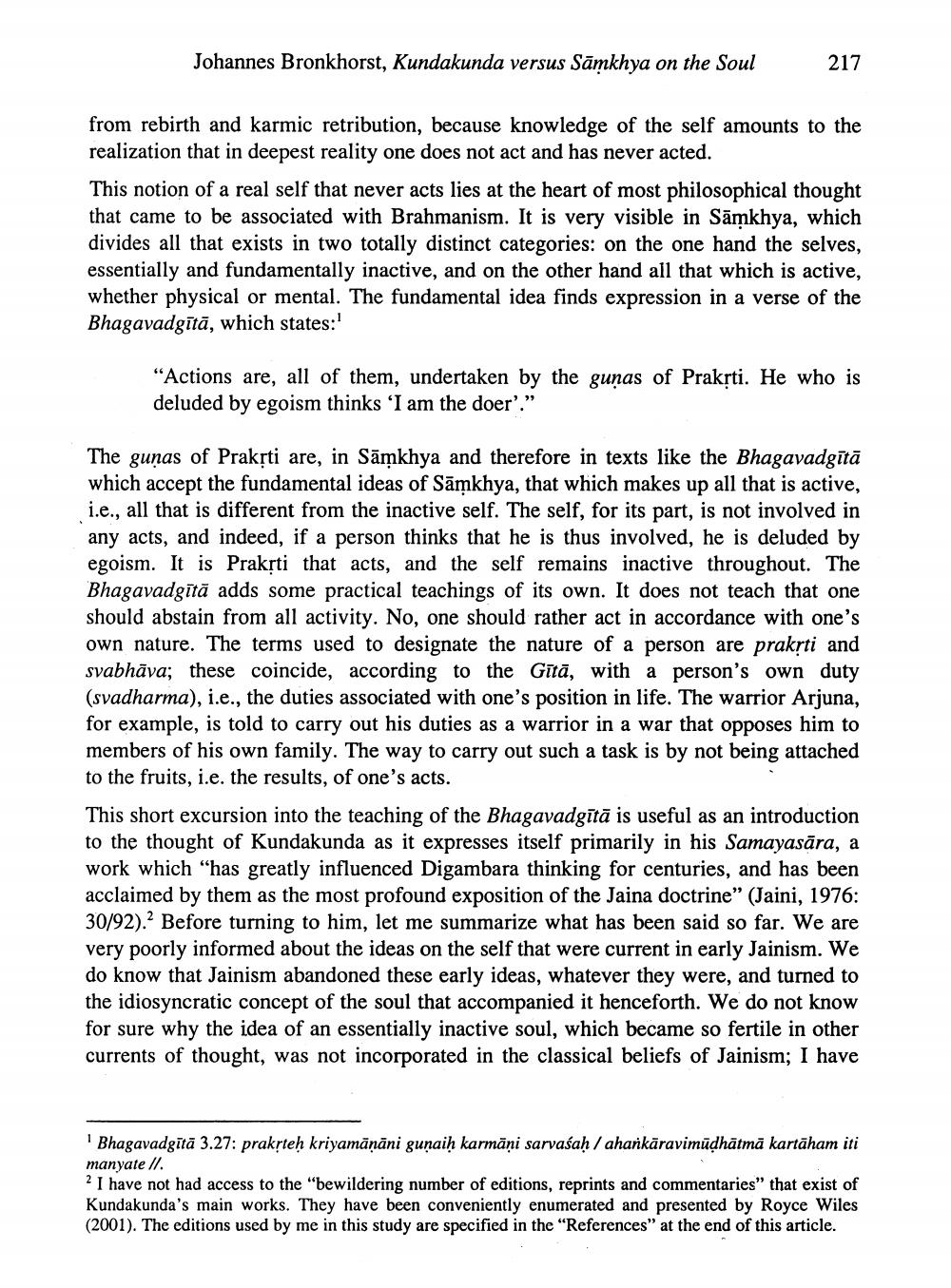________________
Johannes Bronkhorst, Kundakunda versus Sämkhya on the Soul
from rebirth and karmic retribution, because knowledge of the self amounts to the realization that in deepest reality one does not act and has never acted.
217
This notion of a real self that never acts lies at the heart of most philosophical thought that came to be associated with Brahmanism. It is very visible in Sämkhya, which divides all that exists in two totally distinct categories: on the one hand the selves, essentially and fundamentally inactive, and on the other hand all that which is active, whether physical or mental. The fundamental idea finds expression in a verse of the Bhagavadgita, which states:"
"Actions are, all of them, undertaken by the gunas of Prakṛti. He who is deluded by egoism thinks 'I am the doer"."
The gunas of Prakṛti are, in Sämkhya and therefore in texts like the Bhagavadgitā which accept the fundamental ideas of Samkhya, that which makes up all that is active, i.e., all that is different from the inactive self. The self, for its part, is not involved in any acts, and indeed, if a person thinks that he is thus involved, he is deluded by egoism. It is Prakṛti that acts, and the self remains inactive throughout. The Bhagavadgītā adds some practical teachings of its own. It does not teach that one should abstain from all activity. No, one should rather act in accordance with one's own nature. The terms used to designate the nature of a person are prakṛti and svabhava; these coincide, according to the Gitä, with a person's own duty. (svadharma), i.e., the duties associated with one's position in life. The warrior Arjuna, for example, is told to carry out his duties as a warrior in a war that opposes him to members of his own family. The way to carry out such a task is by not being attached to the fruits, i.e. the results, of one's acts.
This short excursion into the teaching of the Bhagavadgita is useful as an introduction to the thought of Kundakunda as it expresses itself primarily in his Samayasära, a work which "has greatly influenced Digambara thinking for centuries, and has been acclaimed by them as the most profound exposition of the Jaina doctrine" (Jaini, 1976: 30/92). Before turning to him, let me summarize what has been said so far. We are very poorly informed about the ideas on the self that were current in early Jainism. We do know that Jainism abandoned these early ideas, whatever they were, and turned to the idiosyncratic concept of the soul that accompanied it henceforth. We do not know for sure why the idea of an essentially inactive soul, which became so fertile in other currents of thought, was not incorporated in the classical beliefs of Jainism; I have
1 Bhagavadgitä 3.27: prakṛteḥ kriyamāṇāni guṇaiḥ karmāņi sarvaśaḥ/ahankäravimüḍhätmä kartäham iti manyate //.
2 I have not had access to the "bewildering number of editions, reprints and commentaries" that exist of Kundakunda's main works. They have been conveniently enumerated and presented by Royce Wiles (2001). The editions used by me in this study are specified in the "References" at the end of this article.




